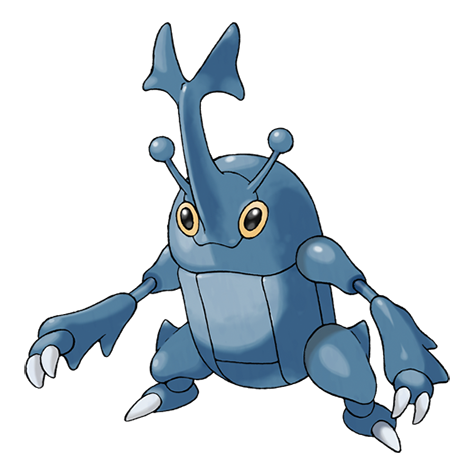I.e. my chef friend had ground jalapeno at her apartment, shit was good. Like cayenne level heat but with a different flavor
I had to go to like an international food market to find some near me which is weird given how ubiquitous jalapeno peppers are
Sumac. It’s a deep purple, lemony spice that’s great for filling the flavor role of an acid like vinegar or lemon juice in things where you don’t want to do that for whatever reason. Although note that it will dye food purple and can make something like curry turn a very unappetizing shade of grey.
On that note, citric acid powder is also good for similar reasons.
indian sour mango powder is also good for curries
Sumac is specifically malic acid (as in sour apples) instead of citric acid (lemons) or acetic acid (vinegar), and it’s really cool how if you’re careful you can tell each type of sourness feels distinctly different.
Neat.
how if you’re careful you can tell each type of sourness feels distinctly different.
Definitely. Even though sumac has a lemony flavor apart from its sourness, it’s experientially distinct from actual lemon and extremely different from vinegar.
Sumac was my first thought too, I love a good sumac onion on just about anything
Also it’s free right now if you live in the northeast. Just go take it off a tree.
Sumac is great in a Mediterranean style salad dressing as well.
Amchur is amazing, as is sumac. They’re quite similar but traditionallythey are used in different cuisines.
Asafoetida/hing is also really great when used properly but it hardly gets any play outside of traditional south Asian cooking and it’s the first spice on the chopping block when a curry gets adapted to a western recipe which is a crying shame.
Lemon myrtle is absolutely delicious. Lavender is too but it’s something that is very polarising.
Mace doesn’t get enough love.
Nigella seeds/kalonji are wonderful, so are ajwain.
I’ve never tried epazote because Mexican food is really dismal here but I hear it’s one of those herbs that becomes a must-have once you start using it. On that note, chipotle peppers are super expensive here so I buy dried ground chipotle pepper and make an adobo directly into whatever dish I add it to.
Amchur is amazing, as is sumac. They’re quite similar but traditionallythey are used in different cuisines
Someone else mentioned sumac colors everything purple and consequently will make curries gray and gross, does amchur not have that property
Amchur doesn’t impart any strong colour.
In my experience, sumac imparts a sort of saffron yellow but it probably depends upon how fresh it is or how it’s handled but it’s a very strong spice so idk if you’re going to notice it having a huge impact on the colour of your dish imo. It’s not going to turn a dish into tyrian purple or anything.
@KobaCumTribute@hexbear.net okay which of you is telling me the truth about the pigmentation 》:|
There’s got to be some confusion here, because it is a very purple spice and while it doesn’t dye things as aggressively as say turmeric does the tint it adds is very much purple. I’ve used it in curry before when I didn’t have lemon or vinegar to give it the little bit of acid it needed to really bring out the flavor, and it tasted amazing but looked completely grey because the purple of the sumac and the orange of the turmeric clashed. I personally don’t care about the appearance of my food, but other people were definitely hesitant to try that particular curry because of the color.
I’ve also added it to tea that I was brewing and it added a clear purple tint. When mixing it into baked goods it also stains the dough purple a bit. Looking it up it’s historically been used as a red or purple dye, so the exact hue of it may vary by species (like chinese sumac looks like it has much paler fruit than the mediterranean variety from the pictures on wikipedia, so it may have a different color when dried and ground too) or by how fresh vs dried the fruits are.
Other considerations aside, natural dyes are notoriously fickle things so it’s going to come down to what else the sumac gets mixed with.
Probably the most relatable example of this is if you ever used red cabbage juice as a pH indicator - those changes in pH make a huge difference to the colour that the juice shows.
I wouldn’t be at all surprised if sumac imparted a deep red or purplish colour in enough concentration (when in the right situation - e.g. sumac lemonade) but I’ve never seen za’atar turn dough or labneh or vegetables an unusual colour so idk. I’m no expert and I’ve never looked into it deeply but I am a sumac aficionado and I’m handy in the kitchen so make of that whatever you will.
dry spices:
- sichuan pepper (for chinese food)
- star anise (good background flavor for lots of asian stuff)
- coriander seed (ground or whole, for different purposes)
- turmeric (necessary for curries and makes stuff yellow)
herbs:
- curry leaf (necessary for south indian food)
- sawtooth coriander/culantro (more intense coriander. south east asian food, mexican food)
- mint
- thai basil
Sichuan is just kinda good in a bunch of stuff. I keep some Sichuan peppercorns in a pepper grinder, I think they need to be fried a bit to be activated but otherwise they add a fun flavor/spice to a lot of things
Culantro also features heavily in Peruvian food
i’m only familiar with it from yunnan, lao, viet and thai food, but yeah after reading up on it it seems it’s more common in central/south american/carribean food than in mexican food
- celery salt
- curry leaves
- safflower
- tamarind paste
- Szechuan peppers
- Sumac
Savory is my all-time favorite herb. I put that shit in everything.
Also i highly recommend keeping MSG on hand, if you don’t already.
Mushroom powder is pretty damn good and the only place I can find it is Trader Joe’s
Oh good idea, i should get some of that
They have powdered mushroom at Harris teeter iirc, sold as “umami enhancer”
I’ve found it at Asian grocers as “mushroom bouillon powder”
galangal galangal galangal galangal galangal
shit’s magic
What’s the best way to keep it? I try to store it like I would keep fresh ginger but it tends to mold after a week or two
I don’t know tbh, I’ve always just gotten what I need at the time
Sichuan peppercorns
Is Barahat uncommon enough? Love that shit
smoked salt
I’m gonna define “uncommon” to mean, “uncommon in Anglo countries” because some of these things are very common in very populous countries but not well-known in Anglo countries.
Black salt tastes eggy and can be added to any vegan dish to make it have some egg taste. It is pretty common in India, particularly as a component of chata masala. Chaat masala is also great, highly recommend it.
Lee kum kee mushroom boullion powder (or similar brand). It is basically a mushroomy msg + salt powder and it will instantly give a savory dish a flavor boost.
Hing, aka asafoetida, provides a garlicky flavor and a strong smell. It is also a component of chaat masala. It should be kept in an airtight jar if you want to avoid your whole place smelling like it. Also avoid if you are pregnant, as it may contribute to miscarriages. The plant it is from is a relative of that one plant that Romans used to eat as birth control and I bet these are related facts.
Real chili powder. Like the only ingredient is chilis. When Americans buy chili powder they are usually getting a mix of things. Real chili powder let’s you add just a nice chili flavor and nothing else.
Citric acid. It adds instant tang and is a great pantry backup for lemon juice. You can also use it to make a nice vegan ranch in combination with a vegan mayo. You can also make sour candy out of any other candy by just rolling it in some citric acid. Example: sour patch kids are just Swedish fish rolled in citric acid.
Also I’ll scone sumac and green mango powder as nice uncommon spices.
Be careful with citric acid though, it’s extremely potent. My partner accidentally dropped too much into a stew and we had to pretty much make the stew like 3x bigger to dilute the sour taste
Tarragon has a light licorice taste and is wonderful. Whenever I make a lemon pasta, I include some if I can find it fresh. It’s also used a lot of food in the Near East and Middle East like chakapuli.
I also love keeping chili powders on hand like shichimi tōgarashi, gochugaru, and mala powder.
MSG
Za’attar is delicious. Great simply on bread or in anything pepper is good in. I do cacio e pepe with it as well. Excellent!
For those who can’t find some of these, you can try harvesting or preparing them at home.
Peppers can be hung on a string, ideally in a sunny, dry place, and they’ll eventually dry out. From there you can grind them, either manually with a mortar and pestle, or in a coffee grinder (I keep a separate one just for spices). They’ll keep better if stored whole. This goes for herbs too, which can even be dried flat on a cookie sheet if spread out (I lut that cookie sheet on top of a radiator at home for a week in the cold season to give it gentle heat that won’t cook it).
I saw Taragon mentioned in another comment. If you don’t see this commonly, check the fresh herbs section at your loval grocer around Thanksgiving time. Buy extra when it’s available and dry it out.
Sumac is harvestable and common in much of the northern US. Poison sumac looks quite different from the edible kind, and should not be easily confused, but google it so you know you’re getting the right stuff.
If you’re lucky enough to live in a city with an immigrant population, you can find a lot of less common spices at ethnic grocers. Some of the larger ones will even stock spices outside of their particular community’s cuisine.
Finally, if you’ve got money to spend, Penzey’s Spices online generally has good quality but it will cost more than other places (some spices benefit more from high quality than others)














